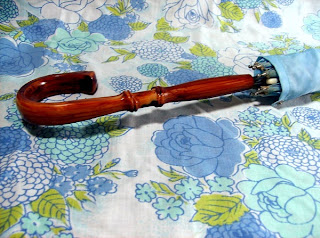Artistic movements tend to do exactly that--they move. Some travel with lightning speed; others creep along at a glacier's pace. But in any case, as Art conquers new lands, as it absorbs the spice or essence of some new culture, an evolution occurs. It changes in ways too subtle to quantify from one day to the next, but as years become decades, and certain elements gain fame as "iconic" examples, the pattern of transition becomes a little clearer. And so we're back to Art Deco.
 |
| charlieroe.com |
Last week's post introduced Deco as the pinnacle of early 20th century style and luxury in Europe and North America. This week, we continue the tour around the globe.
Nothing reaches the shores of South America without absorbing a certain percentage of Latin flair. And no place on that continent has more flair than Brazil, particularly Rio de Janeiro. The city is a mecca for Art Deco architecture enthusiasts, and it also happens to be home to the world's largest Art Deco monument: Christ the Redeemer, completed in 1931.
 |
| most-famous-places.blogspot.com |
Africa's Art Deco legacy begins with Egypt. The geometry of the architecture, paired with the angular figures of tomb art, and the rounded and sharp lines of hieroglyphs, made Egypt a perfect source of inspiration for Deco artists and designers.
 |
Art Deco Egyptian Revival boudoir lamp with skyscraper shade.
antiquehelper.com
|
The discovery of King Tut's tomb in 1922 was the icing on the cake. Egypt Fever spread worldwide, and in addition to a renewed interest in tomb treasures and mummy feet, Egyptian Revival jewelry and furniture hit the market (though not for the first time).
 |
| Cartier scarab buckle brooch; genevaanderson.wordpress.com |
Much farther south, in the politically tense Union of South Africa (think Apartheid), Art Deco became an obsession. Like several other regions of the continent, South Africa was attempting to elevate itself above the stereotype by emulating some of the more "modern" nations of the Western world. Add to that the fact that the 1930s race for luxury increased the worldwide demand for gold, and South Africa had plenty of it, and you have the perfect opportunity to maximize your best assets by advertising luxury with luxury. Cape Town is still one of the best destinations for Art Deco aficionados.
 |
| Market House, Cape Town; chesterton.co.za |
Much of Art Deco's appeal was its exoticism, both in materials and style. Asia played an essential role in the progression of the style, both because of its artistic influence, and in the way so many of its cultures fully embraced the Art Deco trend.
 |
| kqed.org |
China was particularly influential in the realm of furniture design, with its history of simple, linear pieces. There was also the matter of a color called "jade" (which really covers a lot of ground when it comes to the green spectrum, but the 1930s were a decade of green). Money is green. So is envy. And that's Art Deco for you.
 |
| Ma Bell Building; freeimagefinder.com |
 |
| animaland-ecotone.blogspot.com |
 |
| vandm.com |
 |
| art-deco-weddings.com |
Of course, architectural evidence of the movement is everywhere, from Shanghai to Tokyo. But my favorite Asian deco is of the paper variety. Japan's lithography offers some delightful examples, so many that the Japan Society in NY City recently hosted an exhibit full of them.
 |
| salon.com |
 |
| salon.com |
Asian influence also manifested itself in jewelry design. Dark lines, diamonds, and red enamel are a perfect combination!
Not to be left behind, Australia is home to some great architectural and sculptural examples, and their Art Deco Society is dedicated to the preservation of the style from coast to coast. Here are some really fantastic buildings:
 |
| http://www.flickr.com/photos/highplains68/4527549100/ |
 |
| British Medical Society; sydneywebcam.blogspot.com |
*Information obtained from: http://www.southafrica.net/sat/content/en/us/full-article?oid=115632&sn=Detail&pid=7014; http://www.adsw.org/perspective/2003/Jewelery/index.html; http://travelinsider.qantas.com.au/art_deco_australia.htm; http://www.japansociety.org/event/deco-japan-shaping-art-and-culture-19201945; http://www.vam.ac.uk/vastatic/microsites/1157_art_deco/virtual/gallery1/east_asia.htm












.JPG)